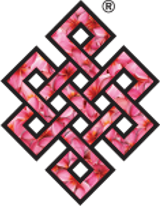Saffron (Perfumery Base)
Description
Saffron is a spice derived from the flower of Crocus sativus, commonly known as the saffron crocus. Crocus is a genus in the family Iridaceae. Saffron crocus grows to 20–30 cm (8–12 in) and bears up to four flowers, each with three vivid crimson stigmas, which are the distal end of a carpel. Together with the styles, or stalks that connect the stigmas to their host plant, the dried stigmas are used mainly in various cuisines as a seasoning and colouring agent.
Saffron, long among the world's most costly spices by weight is native to Greece or Southwest Asia and was first cultivated in Greece. As a genetically monomorphic clone, it was slowly propagated throughout much of Eurasia and was later brought to parts of North Africa, North America, and Oceania.
The saffron crocus, unknown in the wild, probably descends from Crocus cartwrightianus, which originated in Crete C. thomasii and C. pallasii are other possible precursors. The saffron crocus is a triploid that is "self-incompatible" and male sterile. It undergoes aberrant meiosis and is hence incapable of independent sexual reproduction—all propagation is by vegetative multiplication via manual "divide-and-set" of a starter clone or by interspecific hybridisation.If C. sativus is a mutant form of C. cartwrightianus, then it may have emerged via plant breeding,which would have selected for elongated stigmas, in late Bronze Age Crete.
Saffron's taste and iodoform- or hay-like fragrance result from the chemicals picrocrocin and safranal.It also contains a carotenoid dye, crocin, which imparts a rich golden-yellow hue to dishes and textiles. Its recorded history is attested in a 7th-century BC Assyrian botanical treatise compiled under Ashurbanipal, and it has been traded and used for over four millennia. Iran now accounts for approximately 90% of the world production of saffron.
A degree of uncertainty surrounds the origin of the English word, "saffron" although it can be traced to have stemmed immediately from 12th-century Old French term safran, which comes from the Latin word safranum. Safranum comes from the Persian intercessor. Old Persian is the first language in which the use of saffron in cooking is recorded, with references dating back thousands of years.
In fact some sources argue that it originated from Middle East/Persia and became associated with Greek, Spanish, and Indian cuisines.Saffron's aroma is often described by connoisseurs as reminiscent of metallic honey with grassy or hay-like notes, while its taste has also been noted as hay-like and sweet. Saffron also contributes a luminous yellow-orange colouring to foods. Saffron is widely used in Indian, Persian, European, Arab, and Turkish cuisines. Confectioneries and liquors also often include saffron.
Common saffron substitutes include safflower (Carthamus tinctorius, which is often sold as "Portuguese saffron" or "ACAFRAO"), annatto, and turmeric (Curcuma longa). Saffron has also been used as a fabric dye, particularly in China and India, and in perfumery. It is used for religious purposes in India, and is widely used in cooking in many cuisines, ranging from the Milanese risotto of Italy to the bouillabaisse of France to the biryani with various meat accompaniments in South Asia.

